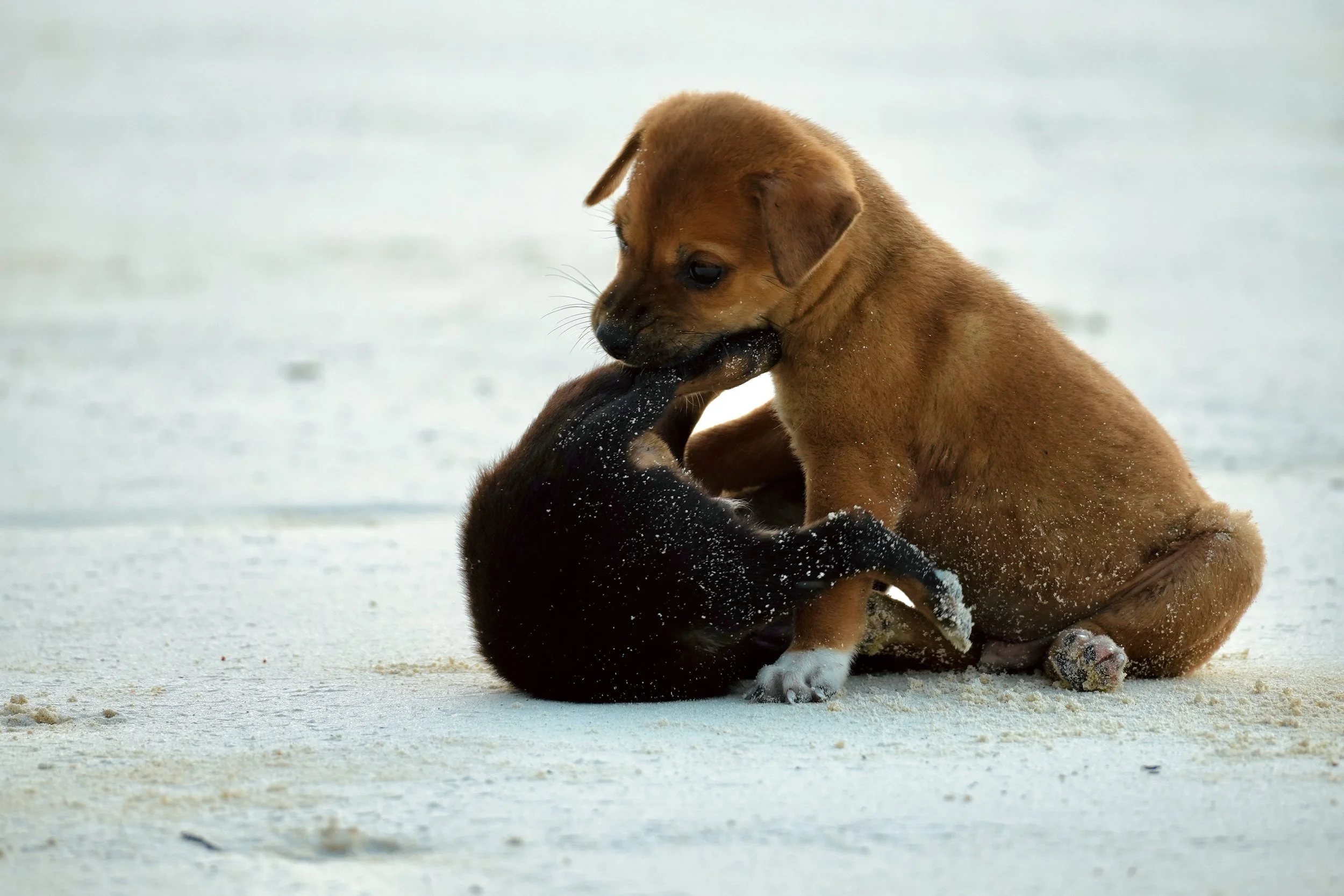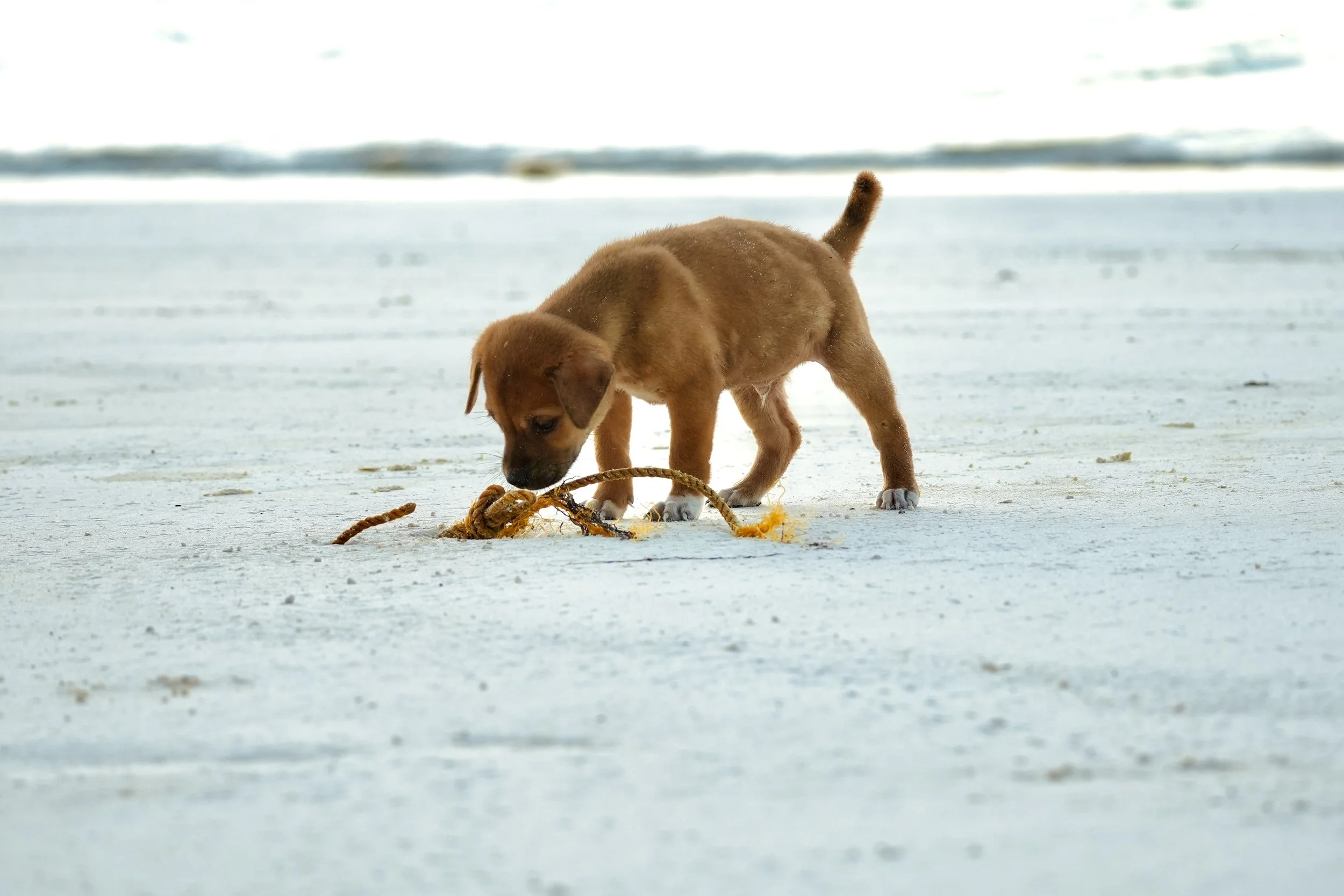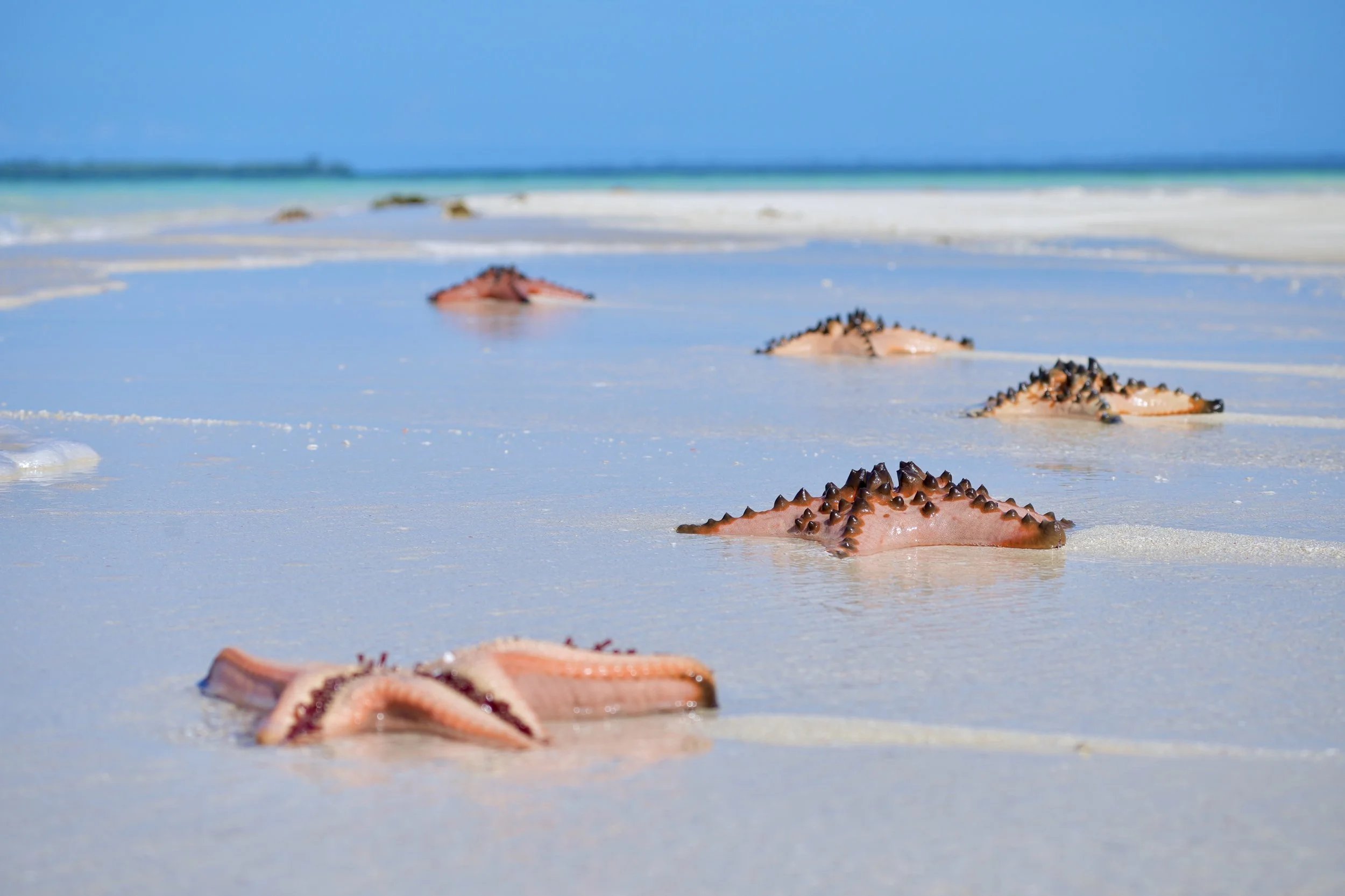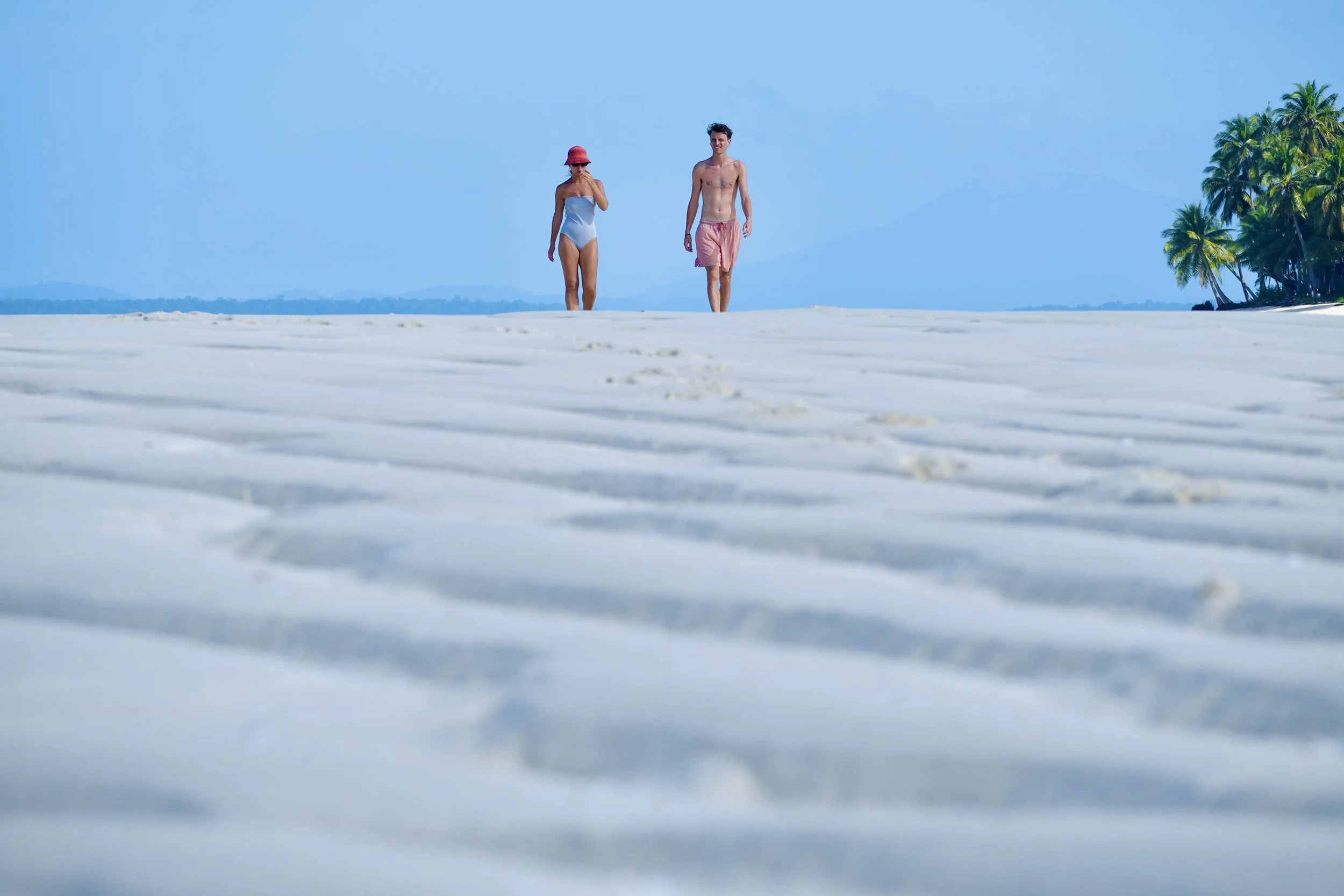Philippines: Last Day in Balabac
The day began with warm light and tiny pawprints. Punta Sebaring was still waking up when the puppies appeared—tumbling across the sand like living sparks, chasing each other through water that glowed pink with sunrise. There are few places left on earth where morning feels untouched, but this stretch of Balabac, with its white sand dunes and quiet shoreline, felt like a world paused just long enough for us to step inside.
One pup broke away from the play, sitting alone and watching the tide roll in. Something about the scene felt grounding: the simplicity of a creature who needed nothing more than the sound of waves and the warmth of the rising sun. In a place this remote, solitude doesn’t feel empty — it feels honest.
As we packed for the day’s trip, one of the campers crouched down to greet the tiny patrol of morning guardians. The dogs responded with eager wiggles, leaning into every scratch and pat. Life slows down here, not because of the absence of things, but because of the abundance of simple moments.
A dog nudged a ball toward us, and the improvised match began. The dog dribbled better than any of us, weaving between ankles on the powder-soft sand. There are no gyms here, no schedules, no hurry — just a playful reminder that joy doesn’t always arrive in grand scenes, but in the small ones that catch you off guard.
We packed up for the day’s excursion, slipping bags over our shoulders as the sun climbed higher. The boat waited down the beach, its hull rocking gently with the tide. We climbed aboard, the engine sputtered awake, and Punta Sebaring drifted away behind us.
Balabac’s waters are some of the clearest in the Philippines — on good days, visibility reaches 30 meters, turning the sea into a shifting mosaic of greens and blues. As the boat cut across open water, sandbars glimmered in the distance like pale brushstrokes, appearing and disappearing as the tide breathed.
Soon, a narrow stretch of white sand rose from the horizon: the starfish sandbar.
Stepping off the boat felt like stepping into glass. The water was so clear, the surface almost disappeared. Every ripple, every grain of sand, every passing fish was visible as if floating in the air. The world here defies logic — it becomes something softer, brighter, dreamlike.
Kneeling down, I found the first starfish resting on the rippled sand, its orange-brown body mottled like cooled clay. It was heavier than expected, textured and silent, a patient creature shaped by slow tides and long hours of sunlight.
As we walked, more starfish came into view. Dozens of them — glowing in rusty colors like scattered embers on the pale seafloor. They looked carefully placed, as if the sea had arranged its own quiet gallery for us to wander through.
Nearby, a couple paused hand-in-hand, pointing at something below the water. The tide whispered around their ankles. No crowds. No noise. Just the slow, shared wonder of watching the sea reveal another small miracle.
From a distance, they looked like silhouettes drifting across a strip of light. The sandbar narrows quickly, giving every step a feeling of softness and impermanence — like walking along the seam of a dream.
Beyond the shallow water, a thick wall of palm trees stood dark against the bright sky. Their shadows stretched across the sand, silent and unmoving. Even in paradise, there are places the sunlight doesn’t fully reach — and that contrast only makes the bright parts feel brighter.
When I think of this day, it feels less like something that happened and more like something I drifted through — slow, luminous, effortless. Balabac doesn’t overwhelm. It unfolds. It reveals itself in small, quiet ways: in beach dogs racing the sunrise, in saltwater so clear it looks unreal, in the hush of a sandbar dotted with starfish.
This wasn’t the most organized trip I’ve ever taken. Far from it. But here, in this gentle corner of the Philippines, everything aligned. The light. The water. The silence. The company. The kind of day that doesn’t just sit in memory — it lingers, softly, like a tide returning.
Some places stay with you long after you leave.
Balabac is one of them.
To see more photos & videos from my travels visit the links below
happy traveling,
~Sean









